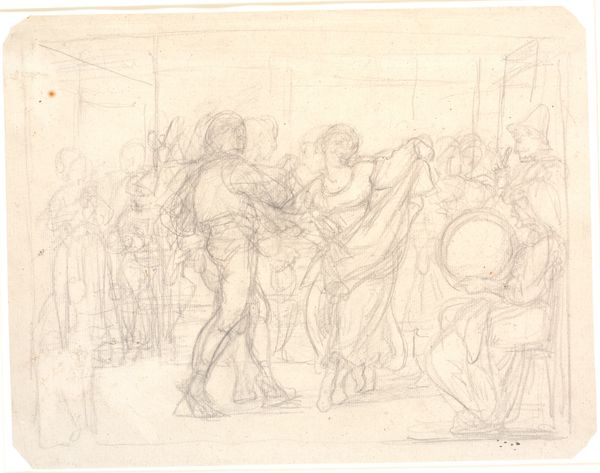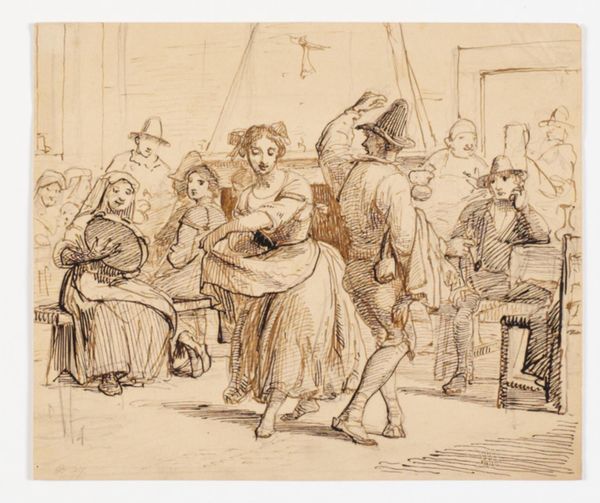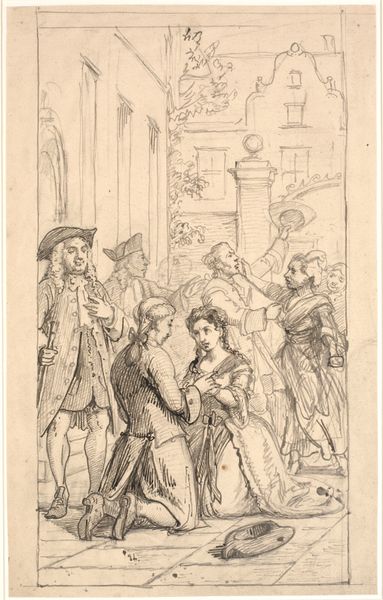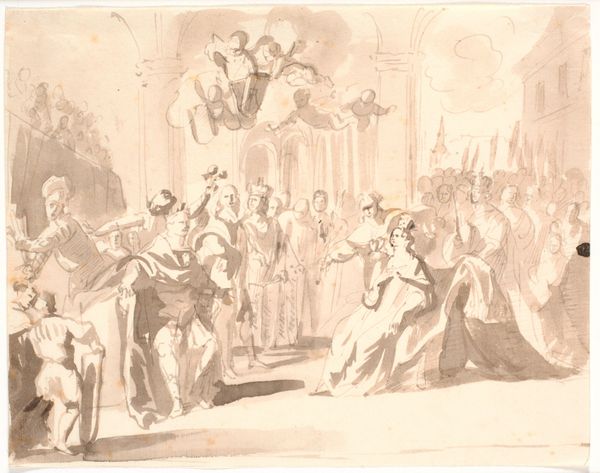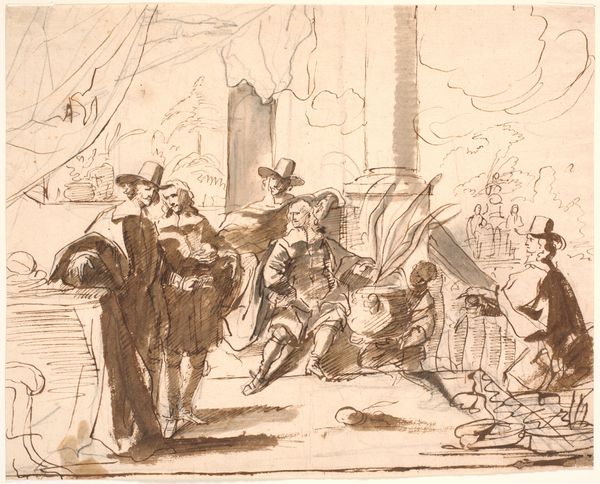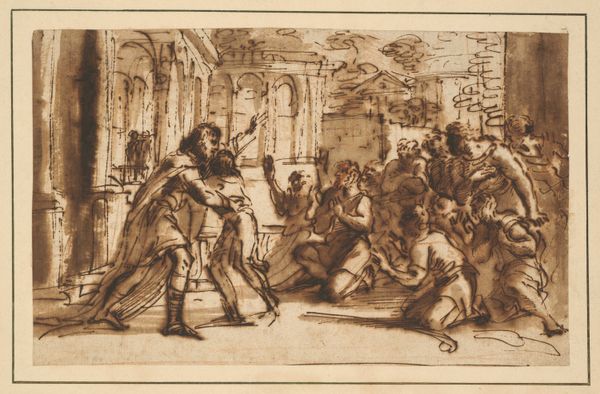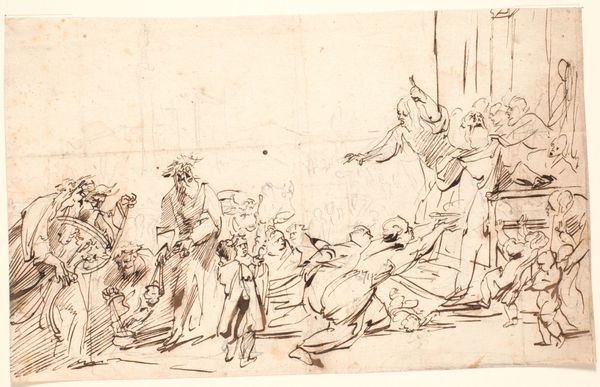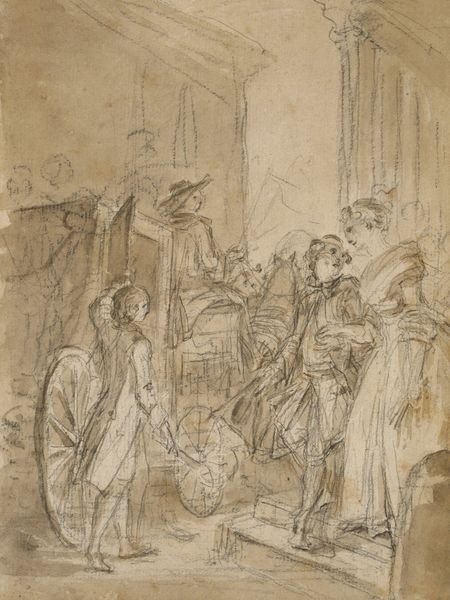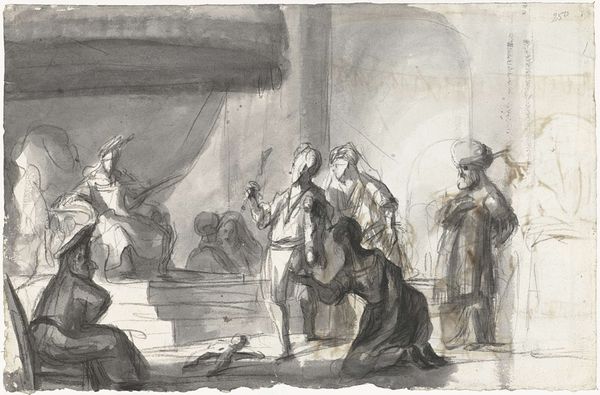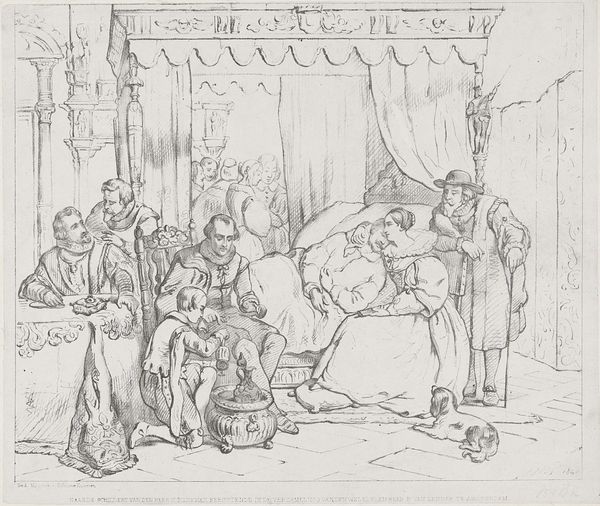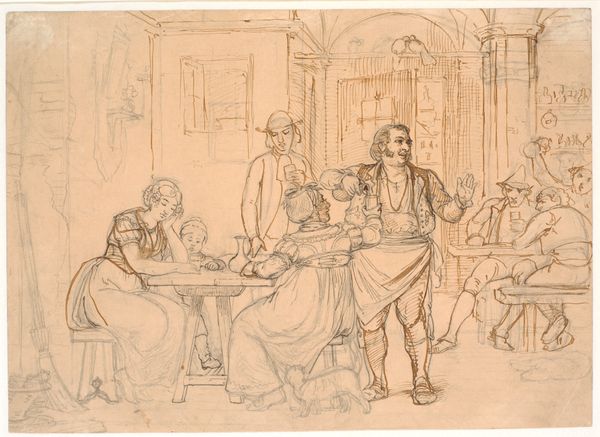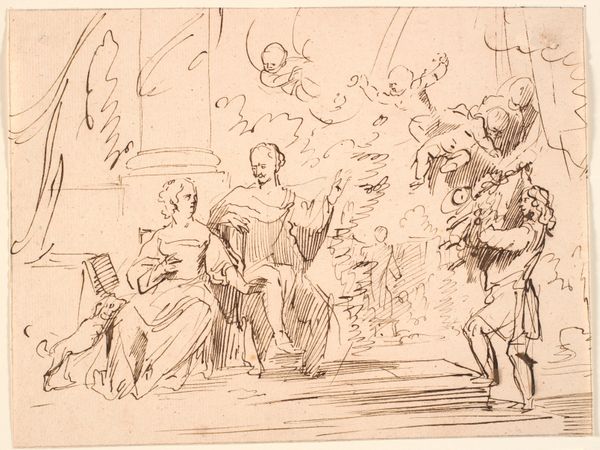
drawing, pencil, pen
#
drawing
#
narrative-art
#
figuration
#
romanticism
#
pencil
#
pen
#
genre-painting
Copyright: Public Domain: Artvee
Curator: Today, we’re looking at "Dance in a Tavern," a pencil and pen drawing by Wilhelm Marstrand. Dating to sometime between 1810 and 1873, it provides an engaging glimpse into social life of the period. What strikes you about it? Editor: It’s fascinating! The sketchy lines and warm tones give it a sense of spontaneity. The scene feels like a brief capture of a lively, perhaps even raucous, social gathering. You can almost hear the music and laughter. Curator: Genre scenes like this were popular, reflecting a broader interest in portraying everyday life, but through the lens of Romanticism. Editor: Absolutely, but whose everyday life were these artists choosing to reflect? These taverns were very much gendered spaces, so it makes you wonder about the kind of social norms that governed interactions, who was welcomed, and on what terms. It would be interesting to dig deeper into the narratives of inclusion and exclusion being constructed within this scene. Curator: Well, paintings and drawings like this could perpetuate social scripts or invite social critique depending on the audience and cultural context in which they circulated. I wonder how viewers back then interpreted the interaction between the dancing man and woman, their body language seems… animated. Was Marstrand observing a local tradition or creating a moral comment about social behavior? Editor: Right, is it playful flirtation or something more akin to an aggressive come-on? I think, for us today, it invites a conversation about social spaces and how power dynamics operate within them, and what role artists play in presenting—or challenging—those power dynamics. Curator: Perhaps even offering the elite viewers a vicarious and therefore acceptable brush with a more disorderly social experience. Regardless of the artist's intent, examining Marstrand's piece illuminates the function of images as documents of and commentaries on society. Editor: It's a worthwhile challenge, indeed, to keep pushing beyond aesthetic charm toward these questions. It keeps art history vital and accountable, especially when reflecting on how we might construct more egalitarian spaces now.
Comments
No comments
Be the first to comment and join the conversation on the ultimate creative platform.
